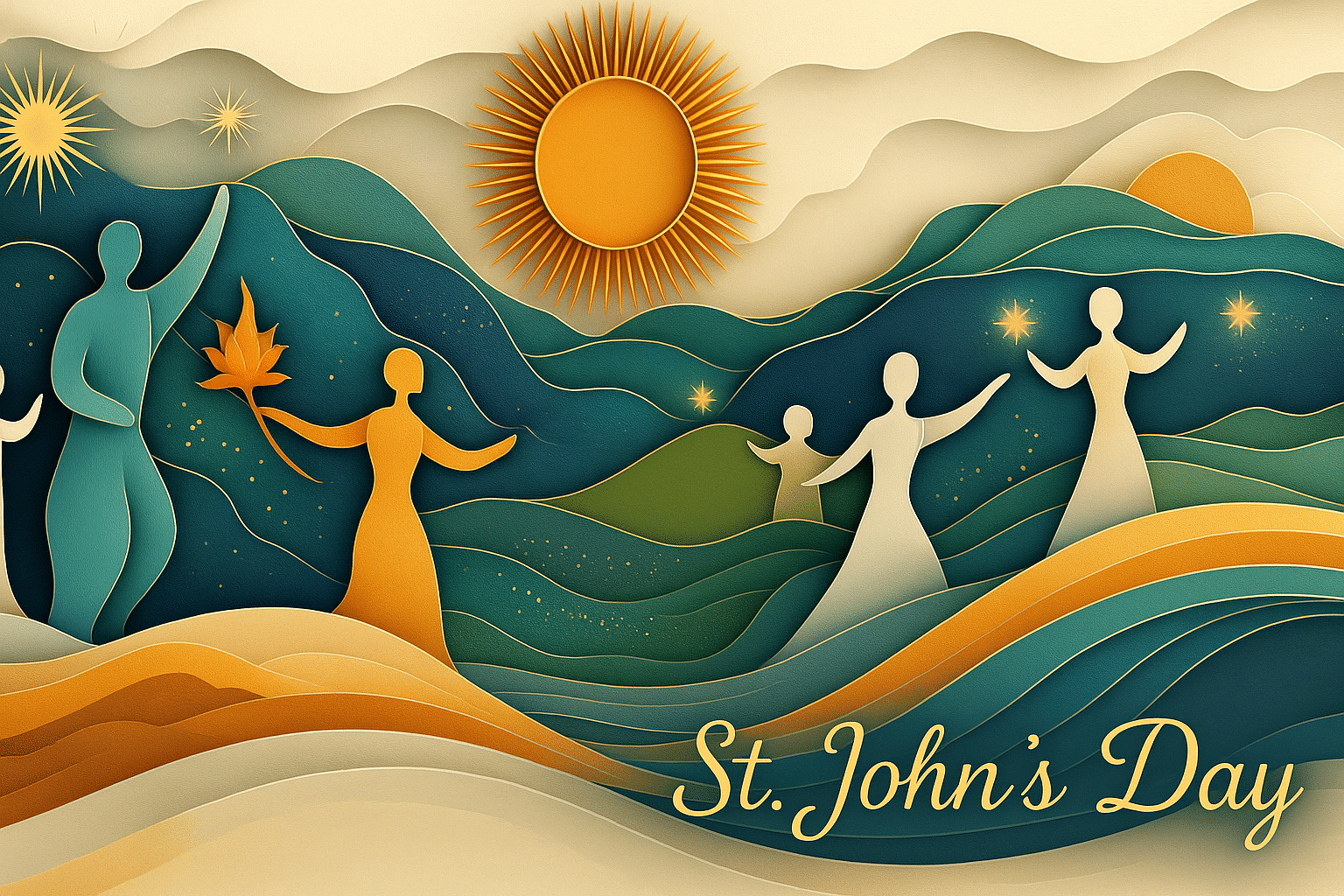What is St. John’s Day?
St. John’s Day, officially known as the Feast of Saint John the Baptist, is celebrated every year on June 24 in many parts of the world. This day honors the birth of John the Baptist, a major figure in Christianity known for baptizing Jesus and preaching about repentance. It is one of the few saint’s feast days that commemorate a birth rather than a death, underlining the importance of John’s role in preparing the way for Jesus Christ.
St. John’s Day is deeply tied to midsummer celebrations, especially in Europe and Latin America. Over the centuries, traditional religious observances merged with older seasonal festivals, creating a mix of solemn ceremonies and joyful festivities. Bonfires, music, and dancing are common, symbolizing light, renewal, and community.
History and Origin
The celebration of St. John’s Day dates back to early Christianity. The choice of June 24 is symbolic because it falls close to the summer solstice, a time historically associated with light and rebirth. In the Gospel of Luke, it is said that John was born six months before Jesus, aligning perfectly with the calendar.
Originally a strictly religious observance, St. John’s Day became associated with popular midsummer festivals, especially in rural areas. Bonfires were lit to protect people from evil spirits, and the element of fire came to represent purification and hope. Throughout history, the day has evolved, but its core remains: honoring a prophet who called for renewal, faith, and preparation for something greater.
Today, St. John’s Day is celebrated differently depending on the country and region. Some keep a religious focus with church services and processions. Others blend ancient midsummer customs with modern festivities, making it a vibrant mix of faith and folklore.
Who participates in St. John’s Day?
- Christian Communities: Attend church services, processions, and special prayers honoring John the Baptist.
- European Villages and Towns: Celebrate with bonfires, traditional music, and communal feasts.
- Latin American Communities: Blend Catholic traditions with colorful festivals, dances, and parades.
- Families and Friends: Gather for outdoor activities, lighting bonfires, and enjoying seasonal foods together.
- Cultural Organizations: Host events that preserve and showcase midsummer traditions tied to St. John’s Day.
Slogans and Themes
St. John’s Day often carries slogans like “Light Overcomes Darkness,” “Prepare the Way,” and “Celebrate Renewal.” Themes usually focus on rebirth, purity, and the triumph of light over darkness. The day emphasizes spiritual reflection while also celebrating life, nature, and human connection. It blends sacred meaning with seasonal joy, showing how tradition and renewal walk hand in hand.
Colors, Symbols, and Patterns
Colors
- White: Symbolizes purity, renewal, and the spiritual message of John the Baptist.
- Gold: Represents the light and warmth of midsummer, as well as divine presence.
- Green: Stands for life, growth, and the natural world that flourishes in summer.
Symbols
- Bonfire: Represents purification, protection, and the celebration of light at the height of summer.
- Water: Symbolizes baptism, renewal, and spiritual cleansing, closely linked to John’s ministry.
- Lamb: Often associated with John the Baptist, representing innocence and preparation for salvation.
Patterns
- Flame Designs: Reflect the importance of fire rituals and the symbolic victory of light.
- Waves and Water Motifs: Represent baptism and the role of water in spiritual rebirth.
- Floral Garlands: Celebrate nature’s abundance and the renewal of life during midsummer.
Most Used Hashtags
- #StJohnsDay
- #FeastOfSaintJohn
- #Midsummer
- #SummerSolstice
- #LightAndRenewal
How do you celebrate St. John’s Day?
- Light Bonfires: Gather with family and friends to light traditional fires that symbolize protection and joy.
- Attend Church Services: Participate in religious ceremonies honoring the birth of John the Baptist.
- Join Festivals: Enjoy community events with music, dancing, and feasting that blend sacred and seasonal traditions.
- Take Part in Water Rituals: Engage in customs like symbolic bathing, linking to themes of baptism and renewal.
- Create Floral Decorations: Make wreaths and garlands celebrating the beauty and abundance of midsummer.
Why is St. John’s Day important?
St. John’s Day is important because it honors one of Christianity’s most influential prophets. John the Baptist’s message of preparation, renewal, and faith resonates across centuries. His role in baptizing Jesus marks a pivotal moment in Christian history, making his birth a meaningful event to celebrate. The day invites people to reflect on themes of light, transformation, and readiness for new beginnings.
In addition to its spiritual meaning, St. John’s Day strengthens cultural ties through shared customs and community gatherings. The merging of religious devotion with joyful midsummer traditions creates a celebration of life, unity, and hope. Whether through lighting fires or joining in prayer, the day reminds people that renewal is both a personal and a communal journey, one that continues to bring people together.
Features
June 24: St. Johns Day
Why do you keep falling for the same type?
Read the article Lovemaps: the hidden blueprint of our love.

